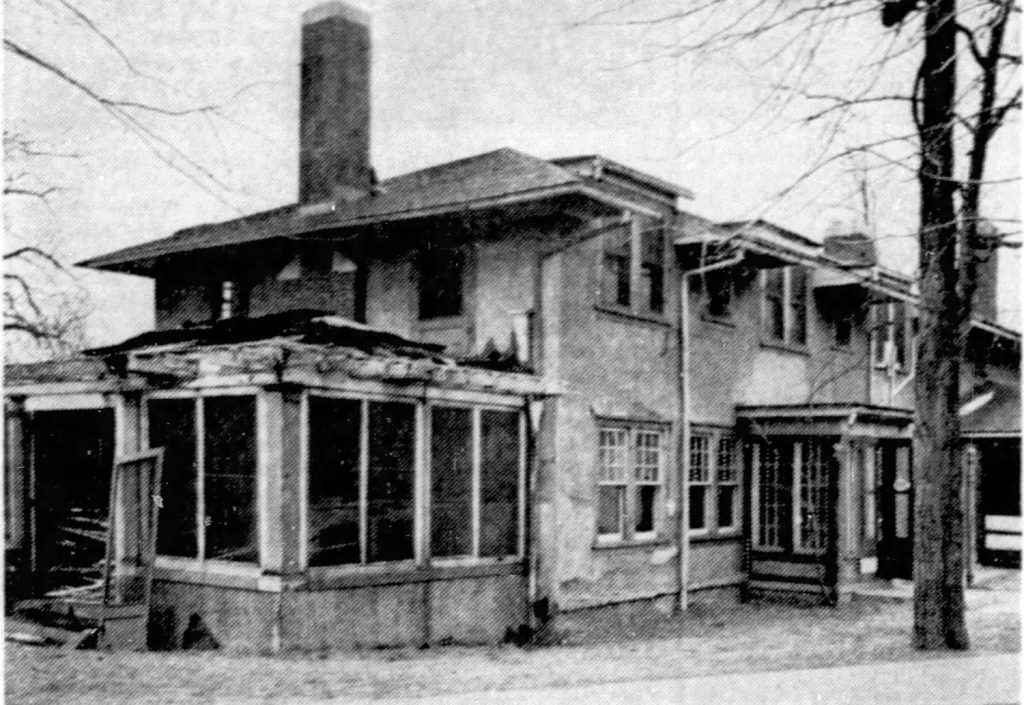
A bit of history to fall
Demolition for historic building
By BOB SUTTON
A historic link with the Battle of Windsor is being demolished.
It is the convent of the Sisters of the Good Shepherd at Maryvale Vocational School, 940 Prince Rd., once the home of Col. John Prince who commanded the Sandwich militia on the morning of Dec. 4, 1838. Prince and his guest Dr. Hume were eating breakfast when a messenger arrived at the house reporting 150 “Patriots” were marching on Windsor. The colonel dressed in hunting attire, buckled on his sword and rode off to raise his troops. The doctor went looking for wounded.
The invaders, who had commandeered a steamboat and crossed the ice-choked Detroit River during night. wanted to make Upper and Lower Canada a republic. They fled after 21 men were killed by militia volleys. After the rout, Col. Prince met the doctor for the second time that day. His body was being eaten by hogs in a pig pen. One arm had been hacked off with an axe and a bayonet had been thrust through Dr. Hume’s chest. The militia commander ordered four Patriot prisoners shot on the spot. It was the third and last time he had to ride to war from the Ontario cottage-style homestead he built on the Park Farm in 1833.
Since the colonel took up his 200 acres in Sandwich, rambling additions have been attached to the original square structure. After the Prince family sold the property it became the Essex Golf and Country Club until the sisters took it over in 1930. “At the time we moved in, we were told we would be doing well if we got another 10 or 12 years use out of it,” says Sister St. Margaret, mother superior. The site will be used as a playground for more than 60 emotionally-disturbed girls between ages 12 and 16 at the school.
Because of the building trades strike, only the interior has been stripped. The elaborate original staircase and oak fireplace remain. The house was part of history during the 27-year period when Col. Prince was its occupant. At the height of his popularity after the twin rebellions of 1837-8 had been put down he was referred to in the press as “king of the western district, if not of Upper Canada.”. Why Col. Prince left a lucrative law practice on the Oxford circuit and chose the life of a country squire at Sandwich is uncertain.
However, he came in style with a reputed 70,000 gold guineas and even several brace of game pheasants. He was the wealthiest man in the Western district. Three years after his arrival he was elected Whig (Conservative) representative for Essex to the Legislative Assembly in Toronto. He remained in politics until 1860 when he moved to Sault Ste. Marie as judge of Algoma District.
When critics of the colonel’s execution of the Battle of Windsor prisoners demanded an answer for his action, the colonel gave a characteristically blunt reply:
–I ordered them to be shot and it was done accordingly.”
In a speech some months before the attack he said captives could not be regarded as prisoners of war since there was no state of war with either the “Patriots” or the United States. He classed the invaders as pirates, and as such, liable for execution without trial. No better illustration could be found than the events which arose from the summary execution of the four Patriots after the battle of Windsor—final episode in the rebellion. Several Windsor residents signed a petition branding his action that of “a murderer and a coward.”
Col. Prince went through the 25 names and selected the eight he considered gentlemen. He challenged them to retract or fight. Five apologized. Two refused and were horsewhipped by the colonel. W. R. Wood accepted the challenge of a pistol duel. The first shot by both combatants missed—but the second shot of Col. Prince smashed the jaw of his opponent.
An anonymous placard was then printed in Detroit offering $800 for the body of Col. Prince or $1,000 for his capture alive. The militia commander replied with an advertisement in the Western Herald Weekly:
“I shall cause 12 spring-guns with wires and strings complete and each loaded with 30 buck shot, to he set about my house and farm buildings; also two man-traps. “All persons are hereby warned not to come within the grounds on which my premises are built, between sunset and sunrise.”

Looking at the Fire Insurance map from 1937, the house was at the rear of the block on what was then the corner of Strathmore & Millen, and the Prince house is marked as the “Nun’s Residence”. That intersection no longer exists with Maryvale having grown to encompass several blocks, the location of the Prince house is basically in the middle of the property today. The house built in 1833 was demolished as part of the Maryvale expansion in 1966.

